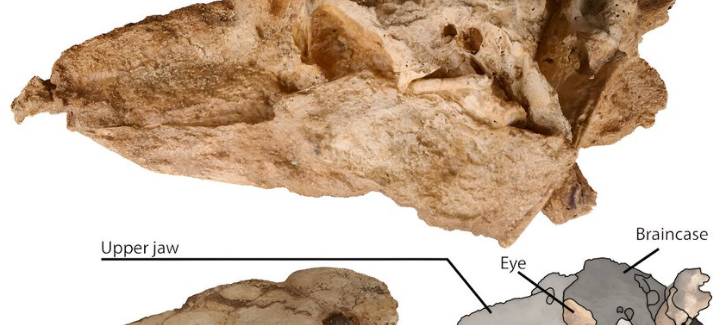Every week now a new species of dinosaur are discovered, from Australia to China to the U.S. and Africa.
One hundred million years ago, during the Cretaceous period, the landscape of northeastern Australia was vastly different from today. The region was submerged under the waters of the inland Eromanga Sea, teeming with a diverse array of marine life including turtles, ichthyosaurs, and the enormous Kronosaurus queenslandicus. Nearby, the skies were dominated by pterosaurs, the largest flying creatures of that era.
In a remarkable discovery made in November 2021, Kevin Petersen, an avocado farmer turned museum curator, unearthed a fossilized skeleton near Richmond in Queensland. This find turned out to be the most complete pterosaur fossil ever discovered in Australia, comprising about 22% of the skeleton with an estimated wingspan of 4.6 meters. The discovery was documented in the journal Scientific Reports, where the pterosaur was named Haliskia peterseni, dubbed Petersen’s sea phantom in honor of its discoverer.
Read “Fact Check: 280M-Year-Old, ‘Alien-Looking’ Fossil Found in Australia?’ on SmartNews: https://t.co/QwhVk41ok8
— Teawhalem (@Teawhalem) June 13, 2024
Pterosaur fossils are notably rare due to their hollow, thin-walled bones which, while advantageous for flight, do not fossilize well. Most pterosaur remains are found only in locations where exceptional conditions have preserved these delicate structures. The discovery of Haliskia is significant as it is only the second partial pterosaur skeleton found in Australia, containing a more substantial amount of the skeleton compared to the previously found Ferrodraco lentoni.
The Haliskia specimen is remarkably well-preserved, including a complete lower jaw, the tip of the upper jaw, 43 teeth, various vertebrae, ribs, wing bones, and parts of a leg. Delicate hyoid bones were also preserved, indicative of a strong muscular tongue, likely used in the capture and consumption of prey. Analysis of the skeleton suggests that Haliskia was an adult at the time of death, evidenced by the fused bones.
Pterosaurs from the region, including Haliskia, are thought to have been primarily piscivorous, although the abundance of cephalopod remains such as belemnites in the same sediments suggests a varied diet that included squid-like creatures. This diet is supported by Haliskia’s long hyoid bones and conical, interlocking teeth which would have been effective in catching slippery prey.
Un nuevo reptil volador fue descubierto en Australia a partir de restos fósiles. Así es ‘Haliskia peterseni’: uno de los mayores depredadores alados de su tiempo.https://t.co/YLWOvAr4C6
— NatGeo Traveler Latinoamérica (@NGTravelerLatin) June 13, 2024
Kevin Petersen, the discoverer of Haliskia, meticulously prepared the fossil using pneumatic tools and metal pins, a laborious process that took many hours. Despite his significant contribution, Petersen chose not to join the formal research team, content with recognition for his discovery. His work not only brought Haliskia to light but also set the stage for future discoveries in the area.
Since Haliskia’s discovery, more pterosaur fossils have been unearthed in the public dig pits near Richmond, underscoring the potential for further significant paleontological finds in the region. These discoveries provide invaluable insights into the ancient ecosystems of prehistoric Australia and highlight the ongoing contributions of dedicated individuals like Petersin to the field of paleontology.
Haliskia peterseni, a new anhanguerian pterosaur from the late Early Cretaceous of Australiahttps://t.co/dyJYVnajID
— Amstel News (@amstelnews) June 13, 2024
The story of Haliskia peterseni enriches our understanding of ancient life and emphasizes the ever-present possibility of uncovering new links to our planet’s distant past. It serves as a testament to the crucial role of amateur enthusiasts in the field of paleontology and the continued exploration of Australia’s rich fossil heritage.
Key Points:
i. In 2021, Kevin Petersen, an avocado farmer and museum curator, discovered the most complete pterosaur fossil in Australia, named Haliskia peterseni, near Richmond in Queensland.
ii. The fossil, representing about 22% of the creature with a 4.6-meter wingspan, is significant as it’s only the second partial pterosaur skeleton found in Australia.
iii. Haliskia’s remains included a complete lower jaw, upper jaw tip, 43 teeth, vertebrae, ribs, wing bones, and a leg, suggesting it was an adult with a diet that likely included fish and squid-like cephalopods.
iv. The discovery highlights the rarity of pterosaur fossils due to their fragile, hollow bones which are difficult to fossilize and often found only in exceptional conditions.
v. Kevin Petersen’s meticulous preparation of the fossil underscores the contribution of enthusiasts to paleontology, and the discovery has spurred further interest and excavations in the region, promising more insights into ancient ecosystems.
James Kravitz – Reprinted with permission of Whatfinger News



